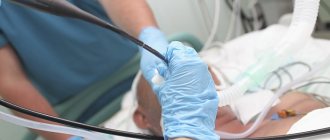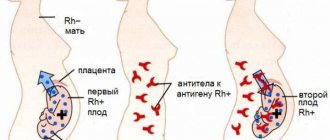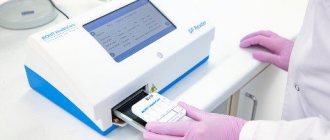The reasons for changes in acetone levels in urine can be very diverse. After all, it is a product of the body’s vital activity. And its level is influenced by many factors. The level of acetone can always be monitored at home using easy-to-use test strips. An increase in acetone in a child’s urine may be a signal of serious illnesses that will require examination by a specialist. Also, acetone in urine increases in pregnant women, as a result of dehydration due to toxicosis and frequent vomiting. Acetone in the urine is a constant companion of diabetes mellitus, namely, the stage of decompensation. For people suffering from diabetes, acetone will serve as a direct ticket to hospital treatment.
What is acetone?
By the same acetone bodies that are determined during a urine test, doctors mean acetone itself, acetoacetic and beta-hydroxybutyric acid. All these substances are products of incomplete oxidation of fats and proteins, and are tightly bound together.
An increase in acetone bodies can be observed in many conditions, that is, not only in diseases. For example, fasting, dieting with an imbalance of fats, proteins and carbohydrates, as well as strong physical activity. Therefore, when you see it in your urine test, you should not immediately panic. This may be due to a nutritional imbalance, which can be easily corrected. Also, changes in this indicator can be observed immediately after anesthesia.
Poisoning with certain substances (phosphorus, lead, atropine) can, in turn, also affect the level of acetone in the urine.
Acetone in the urine (acetonuria) can appear in diseases of the digestive tract, such as tumors and narrowing of the esophagus, cachexia, severe anemia.
Diagnosis of acetonuria
Diagnosis of acetonuria involves conducting various urine tests. The simplest and fastest to carry out is a clinical analysis, however, the daily volume of urine is most often examined. This study allows you to obtain complete information about the dynamic changes in the patient’s parameters during the day. The specialist may also prescribe the following tests:
- urine analysis according to Nechiporenko;
- three-glass sample;
- rapid test.
The last study is carried out at home or in a medical clinic during emergency hospitalization of a patient in a diabetic coma.
Acetone in urine in diabetics
The most common case in which an increase in acetone in the blood is observed is diabetes mellitus, especially in moderate and severe forms. This is due to the fact that the body constantly loses carbohydrates, and its own carbohydrates are not enough to completely oxidize proteins and fats.
Acetone in urine in diabetes mellitus signals an increase in acetone bodies in the blood. And this contributes to the development of acidosis, which in the future causes the development of diabetic coma. But, you should not immediately react to an increase in acetone. The body is equipped with special buffer systems that independently equalize the level of substances both in the blood and in the urine. And for the first time, before medical assistance is provided, their actions will be sufficient to prevent serious violations. In any case, acetonuria is an indicator of an imbalance of carbohydrates and insulin in the body.
Therefore, if you find an increase in acetone in the blood or urine in a diabetic, seek qualified medical help.
Preparing for urine tests
General rules:
- ATTENTION! On the eve of the study, consumables (container with adapter and test tube) must be obtained in advance from any laboratory department
- 10-12 hours before the test it is not recommended to consume: alcohol, spicy and salty foods, as well as foods that change the color of urine (beets, carrots)
- If possible, avoid taking diuretics
- After cystoscopy, a urine test can be prescribed no earlier than 5-7 days later.
- Women are not recommended to take a urine test during menstruation
- The patient collects urine independently (with the exception of children and seriously ill patients)
- Before taking the test, perform a thorough toileting of the external genitalia:
- in women, use a cotton swab moistened with warm soapy water to clean the external genitalia (treating the labia by moving the swab in front and downwards); dried with a clean cloth, previously ironed with a hot iron.
- in men - the external opening of the urethra is toileted with warm water and soap, then washed with warm water and dried with a clean napkin, previously ironed with a hot iron.
General urine analysis
- For general analysis, use the first morning portion of urine (the previous urination should be no later than 2 am)
- Before collecting urine, perform a thorough toilet of the external genitalia. For men, when urinating, completely pull back the skin fold and release the external opening of the urethra. For women, spread the labia. Unscrew the lid of the container and place it with the urine transfer device facing up
- Attention! Do not touch the sterile straw or the inside of the cap with your hands.
- Flush the first small amount of urine into the toilet, and then collect the middle amount of urine in a container
- The container should be filled no more than ¾ of its volume. Minimum - 30 ml, maximum - 80 ml
- Screw the lid on tightly, carefully holding the edges. Stir the contents of the container 3-5 times, carefully turning it 180°
- Label the tubes with patient information. Enter Last Name I.O. Attention! Block letters
- Carefully peel back the sticker on the tube cap, but do not tear it off completely!
- Place the test tube, cap down, into the recess on the container lid. Press down on the bottom of the tube and push the cap through. After filling the test tube with urine, remove it from the container
- Mix the contents of the test tube 8-10 times, carefully turning it 180°. Deliver the test tube with urine to the laboratory department on the day of taking the biomaterial
24-hour urine collection
Collect urine for 24 hours using normal drinking regimen (1.5 - 2 liters per day):
- At 6-8 o'clock in the morning, empty the bladder (pour out this portion of urine)
- Within 24 hours, collect urine in a clean container with a capacity of at least 2 liters. During collection, the container with urine must be stored in a cool place (optimally in the refrigerator on the bottom shelf at +4° +8°C), preventing it from freezing
- Collect the last portion of urine at exactly the same time the next day when collection began the day before.
- Measure the amount of urine and pour 50-100 ml into a special sterile container. Be sure to write on the container the volume of urine collected per day (daily diuresis)
Urinalysis according to Nechiporenko
Collect urine in the morning (immediately after sleep) using the 3-glass sample method: start urinating in the toilet, collect the middle portion in a special sterile container, finish in the toilet
The second portion of urine should prevail in volume. Deliver a medium portion of urine to the laboratory in a urine tube. Report the time of urine collection to the registrar. It is allowed to store urine in the refrigerator (at t +2° +4°), but not more than 1.5 hours.
Urine analysis according to Zimnitsky
Urine for research is collected throughout the day (24 hours), including at night.
- 1 serving: from 6-00 to 9-00 am
- 2 servings: from 9-00 to 12-00
- 3 serving: from 12-00 to 15-00
- 4 servings: from 15-00 to 18-00
- 5th portion: from 18-00 to 21-00
- 6th portion: from 21-00 to 24-00
- 7th portion: from 24-00 to 3-00
- 8 portion: from 3-00 to 6-00
In the morning at 6-00 (on the first day of collection), you should empty your bladder, and this first morning portion of urine is not collected for research, but poured out.
In the future, during the day it is necessary to consistently collect 8 portions of urine. During each of eight 3-hour periods of time, the patient urinates one or more times (depending on the frequency of urination) into a container with a volume of at least 1 liter. The volume of urine in each of the 8 portions is measured and recorded. Each portion of urine is mixed and 30-60 ml is taken into a separate special sterile container. If the patient has no urge to urinate within three hours, the container is left empty. Urine collection is completed at 6 a.m. the next day. All 8 containers are delivered to the laboratory, on each of which it is necessary to indicate the portion number, the volume of urine excreted and the time interval for urine collection.
Report the amount of liquid you drink per day to the receptionist.
Functional tests
- Rehberg test (blood creatinine, 24-hour urine creatinine) Before performing the test, it is necessary to avoid physical activity, exclude strong tea, coffee, and alcohol. Urine is collected throughout the day: the first morning portion of urine is poured into the toilet, all subsequent portions of urine excreted during the day, night and the morning portion of the next day are collected in one container, which is stored in the refrigerator (t +4° +8° C) in during the entire collection period (this is a necessary condition). After completing urine collection, measure the contents of the container, be sure to mix it and immediately pour it into a special container, which must be delivered to the laboratory. Report the volume of daily urine to the treatment nurse. After this, blood is taken from a vein to determine creatinine.
Biochemistry of urine
When preparing for a biochemical urine test, pay attention to what kind of urine needs to be collected (one-time or daily) for each type of analysis.
- Collection of urine for determination of oxalates. Only single urine is used as material for the study.
- Sulkowicz test (urine calcium, qualitative test) Immediately after sleep on an empty stomach, collect the entire morning portion of urine in a dry, clean container
- Mix all collected urine. Pour 40-50 milliliters of the total volume of urine into a special sterile container and close the lid tightly. You cannot take urine from a vessel or potty.
- Urine in a container is delivered to the laboratory
Urine tests for hormones
- Urinalysis for catecholamines, namely: Adrenaline + Norepinephrine
- Adrenaline+Norepinephrine+Dopamine
- Comprehensive study of catecholamines, serotonin and their metabolites
- Urine analysis for the content of intermediate metabolites of catecholamines: metanephrine, normetanephrine
IMPORTANT ! To study 24-hour urine, a preservative is required - 15 g of citric acid (the powder must be obtained on the eve of the study in the Laboratory office along with a container for urine). Before routine urine collection to determine catecholamines, preparations containing rauwolfia, theophylline, nitroglycerin, caffeine, and ethanol should not be used for 3 days. If possible, do not take other medications, as well as foods containing serotonin (chocolate, cheeses and other dairy products, bananas), and do not drink alcohol. Avoid physical activity, stress, smoking, pain, which causes a physiological rise in catecholamines. First, a preservative - powder (citric acid) obtained in the laboratory - is poured into the bottom of a clean large container into which urine will be collected. The first portion of urine is poured into the toilet, the time is noted and the urine is collected in a container with a preservative exactly during the day, the last urination into the container should be 24 hours from the time recorded (for example, from 8.00 am to 8.00 am the next day). As an exception, you can collect urine for 12, 6, 3 hours, or use a single portion of urine collected during the daytime for analysis. At the end of the collection period, measure the total volume of urine excreted per day, mix it, pour some into a specially provided container and immediately bring it for examination. When submitting the material, be sure to note the time of collection and the total volume of urine.
- Determination of DPID in urine Collect urine before 10 am. Collect and deliver the 1st or 2nd morning urine sample to the laboratory
Collection of urine for microbiological studies
- Urine culture (with determination of sensitivity to antibiotics) Urine collection must be carried out before the start of drug treatment and no earlier than 10-14 days after the course of treatment. Collect urine in a special sterile container: DRAIN THE FIRST 15 ml OF URINE INTO THE TOILET. Collect the next 3-10 ml in a special sterile container and screw the lid on tightly. Deliver the biomaterial to the laboratory within 1.5-2 hours after collection. It is allowed to store the biomaterial in the refrigerator (at t +2° +4° C) for no more than 3-4 hours. If delivered to the laboratory later than the specified time, the results of urine culture may be unreliable.
Urine collection for determination of UBC (bladder cancer antigen)
It is recommended to collect a morning urine sample. An arbitrary portion of urine that has been in the bladder for 3 hours or more is subject to examination. The biomaterial is delivered to the laboratory within 3 hours after collection in a special container.
2 glass sample:
- For the study, a full portion of urine is collected, which has been in the bladder for at least 4-5 hours; it is preferable to collect the first morning urine
- The patient begins urinating into the first container and finishes into the second, it is important that the second portion of urine is larger in volume
- Attention! Do not touch the sterile straw or the inside of the cap with your hands.
- Each container should be filled to no more than ¾ of its capacity. Minimum - 30 ml, maximum - 80 ml
- Screw the lid on tightly, carefully holding the edges. Stir the contents of the container 3-5 times, carefully turning it 180°
- Label the tubes with patient information. Enter Last Name I.O. Attention! Block letters
- Carefully peel back the sticker on the tube cap, but do not tear it off completely!
- Place the test tube, cap down, into the recess on the container lid. Press down on the bottom of the tube and push the cap through. After filling the test tube with urine, remove it from the container
- Mix the contents of the test tube 8-10 times, carefully turning it 180°
- Both tubes of urine are delivered to the laboratory, and the portion number must be indicated on each tube. Storage in the refrigerator is allowed (+2…+4), but no more than 1.5 hours
3 glass sample:
- For the study, a full portion of urine is collected, which has been in the bladder for at least 4-5 hours; it is preferable to collect the first morning urine.
- The patient begins to urinate into the first container, continues into the second and finishes into the third, it is important that the second portion of urine is larger in volume (about 80% of all urine).
- Attention! Do not touch the sterile straw or the inside of the cap with your hands.
- Each container should be filled to no more than ¾ of its capacity. Minimum - 30 ml, maximum - 80 ml.
- Screw the lid on tightly, carefully holding the edges. Stir the contents of the container 3-5 times, carefully turning it 180°
- Label the tubes with patient information. Enter Last Name I.O. Attention! Block letters
- Carefully peel back the sticker on the tube cap, but do not tear it off completely!
- Place the test tube, cap down, into the recess on the container lid. Press down on the bottom of the tube and push the cap through. After filling the tube with urine, remove it from the container.
- Mix the contents of the test tube 8-10 times, carefully turning it 180°
- All three tubes of urine are delivered to the laboratory, and the portion number must be indicated on each tube. Storage in the refrigerator is allowed (+2…+4), but no more than 1.5 hours.
Cytological examination of urine:
- It is necessary to collect urine after morning urination
- Urine collected during morning urination is not used for this study. Cells left overnight in the bladder may be destroyed
- Mix all collected urine. Pour 40-50 ml into a special sterile container and deliver to the laboratory department







